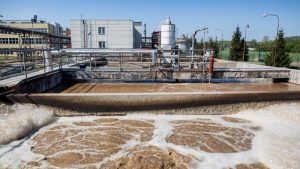A significant part of roading asset management is pavement management. It refers to the road asset manager’s responsibility to take adequate steps to ensure that pavements are acceptable to the public. In other words, pavements in all roading networks must meet the relevant quality standards throughout time. If managers fail to do so, it will put the travelling public in danger and require excessive amounts of money to be invested in repairing damages left till the very last minute. Maintaining roading assets is a responsibility held by the public sector; hence, the roading manager will often be under a strict budget. Since a portion of the public’s hard-earned money goes into the maintenance of the road, the public sector must ensure the funds are responsibly utilised to manage roading assets. This article will explain how a roading asset solution can manage pavements effectively.
Five Ways a Roading Management System Helps Asset Managers
Some asset managers separately invest in a pavement management system to monitor the condition of road networks. However, if roading managers purchase an advanced smart roading management suite, they can easily detect anomalies in pavements. Here are five features that can help:
Visual and Laser Technology to Automate Check-Ups
Traditionally, teams had to be sent out to monitor the health of pavements. Where cracks or asphalt signs are surfacing, teams can communicate it to maintenance teams and rectify it. However, unless visited daily, such cracks will not be seen until months pass by when they have led to irreparable damage. This leads to road closures, or worse, could lead to disastrous accidents. As a result, not only will the public be at risk and inconvenienced, but the amount of money that must be put into repairing the damage is twice as much as it was. However, integrating visual and laser technologies automate the monitoring process. Teams no longer need to spend hours in the sun walking along gravel roads, looking for any signs of cracks or breaks. Like a CCTV camera, these digital tools record and analyse the pavement every second. The moment a small crack is formed, this is communicated to the roading manager to take the necessary steps. Thus, all cracks can be removed from pavements as soon as they appear, rectifying surface anomalies much faster and cheaper.
AI to Predict Anomalies in Roading Assets
In addition to cracks and asphalt signs, there are other ways a pavement could be in bad condition. As the naked eye cannot detect such problems, a powerful tool like AI is required to help find them. By integrating Internet of Things (IoT) sensors, the health condition of assets is frequently monitored in real time. However, the enormous amount of data that is processed requires AI to predict anomalies in the future. AI takes advantage of machine learning which helps process historical and current data. As a result, AI helps road managers detect issues at their initial stages and prevent such anomalies from occurring again. Each anomaly that does surface can be categorised according to its criticality. Hence, managers can schedule maintenance in the relevant order and stick to their restricted financial budget.
GIS to Have an Aerial View of Roading Networks
The transportation network is exceptionally vast. Whether it is monitoring pavement on the main road, the highway, or some other place, the amount of surface area asset managers need to keep up with is unlimited. Imagine how costly it will be to implement advanced technologies at every point. This is why GIS, the abbreviated term for geographic information system, comes into play. GIS acts as the map that gives an aerial view of all operations. It can cover large land masses, ranging from a city or state to an entire country. While each integrated technology provides ample data and results for managers to take note of, GIS puts everything in place. Every piece of information that the raiding manager needs to know about pavements is noted in this respect.
Satellite Data Analytics for Disaster Management
Satellite data analytics is the secret weapon that takes public safety to the next level. For a long time, the collateral damage natural disasters were responsible for was unstoppable. However, with satellite data analytics, asset managers can now take steps in advance to draw a contingency plan in case a disaster strikes. Satellite data analytics accurately predicts weather conditions. Hence where a flood, landslide or something else is predicted to occur, asset managers can ensure residents in the area, vehicles, natural resources, property, buildings and others are safe. It can also provide enough time for roading managers to put in measures that do not damage pavements permanently. It moreover offers insights into slope instabilities and other detrimental threats like sinkholes.
Road Simulation Technology to Test Out Futuristic Events
With the number of advanced technologies available today, road managers are missing out if they do not take advantage of them when constructing pavements. For instance, digital twins allow asset managers to make prototypes through a virtual screen without wasting resources or incurring expenses. In an intelligent screen, smartly test out the most feasible method of constructing a pavement. Use simulation technology to ensure the pavement can withstand any condition. This allows asset managers to take into account climate change and engineer pavements that are eco-friendly. Detecting the number of emissions released and taking measures to curtail them are other ways that simulation technology can help. Finding which raw materials are most robust and feasible for the construction phase is a great way to ensure that resources and finances are made to create the best roading pavement.
Industry 4.0 Technology for the Win
A century ago, the roading industry struggled with maintenance and could only reactively engage in anomalies that occurred in the pavement. Today, with the host of technologies at our disposal, roading asset managers under a tight budget should consider investing in a full industry 4.0-powered smart roading asset solution. With the number of futuristic insights it offers and the flexibility it gives asset managers to monitor, take safety measures and others, the ROI is one hundred times greater when you invest in the right technologies.







